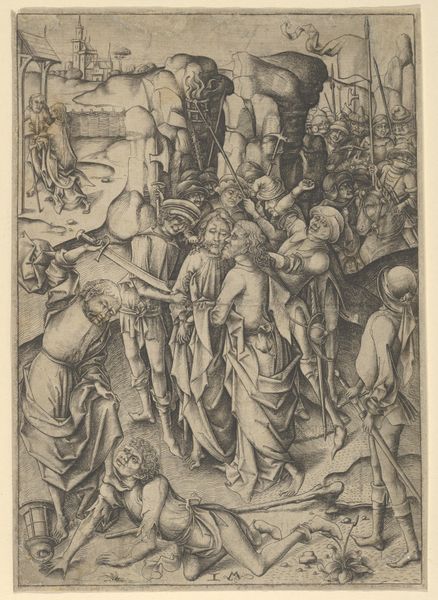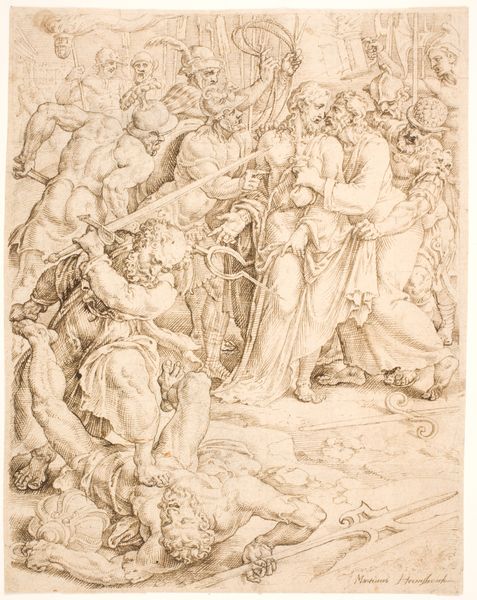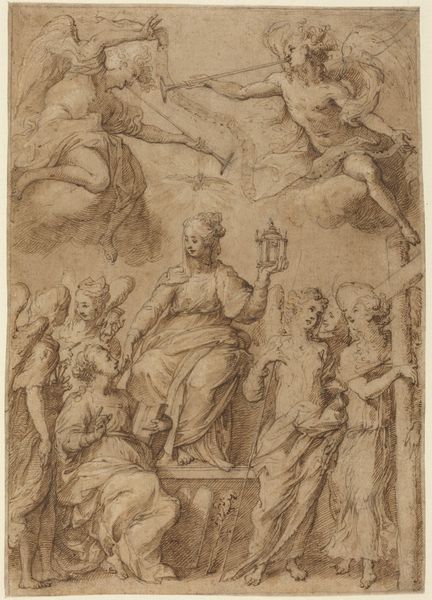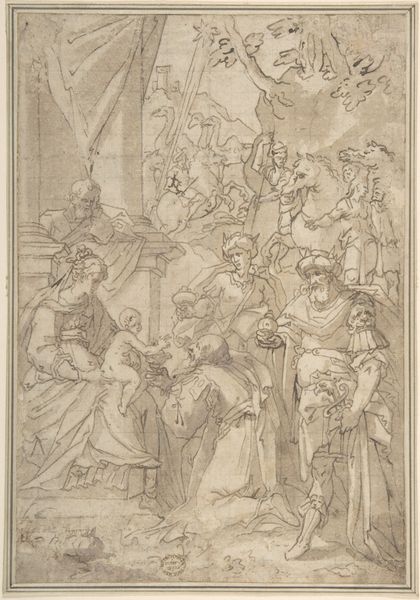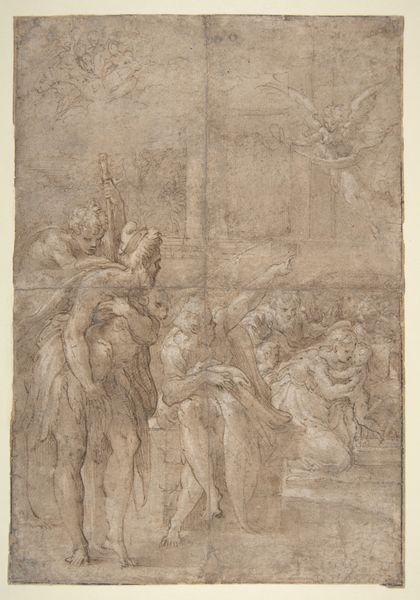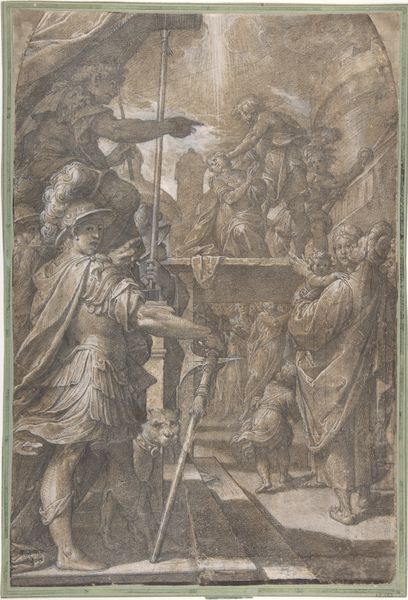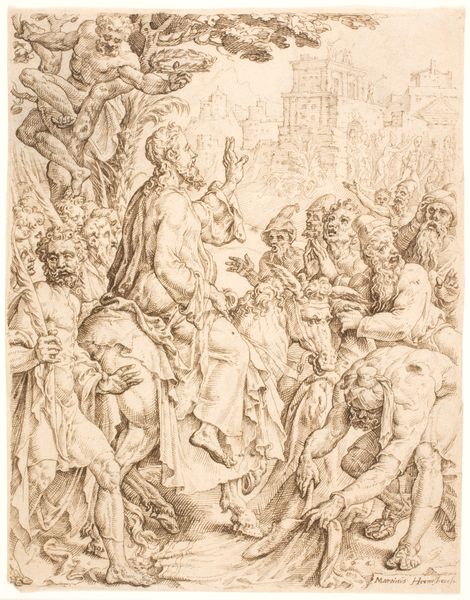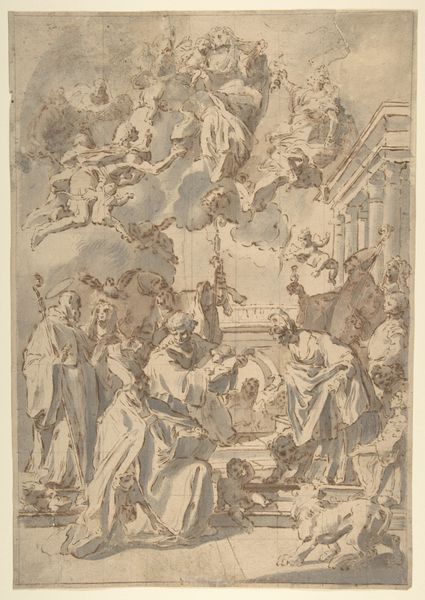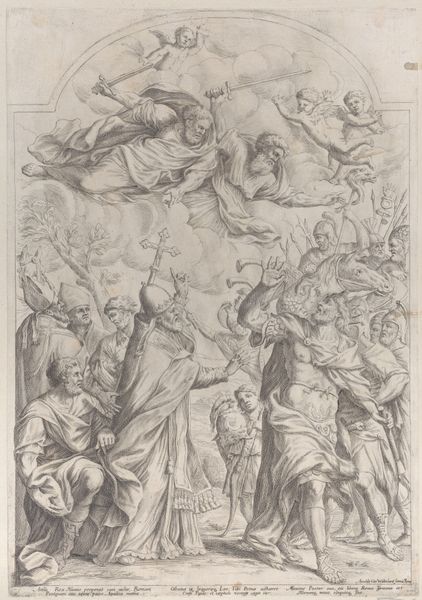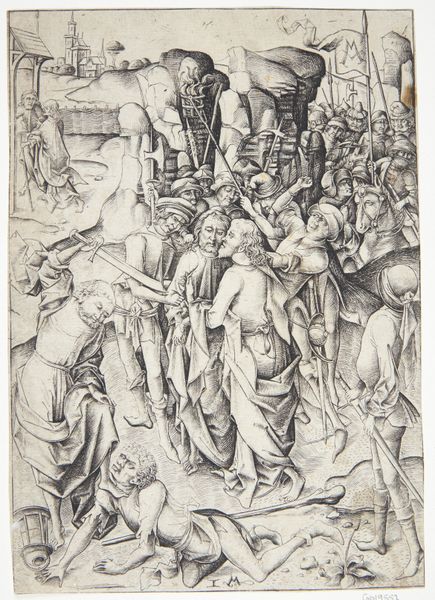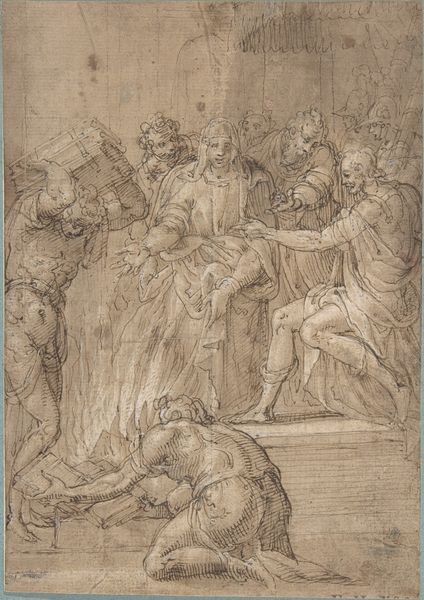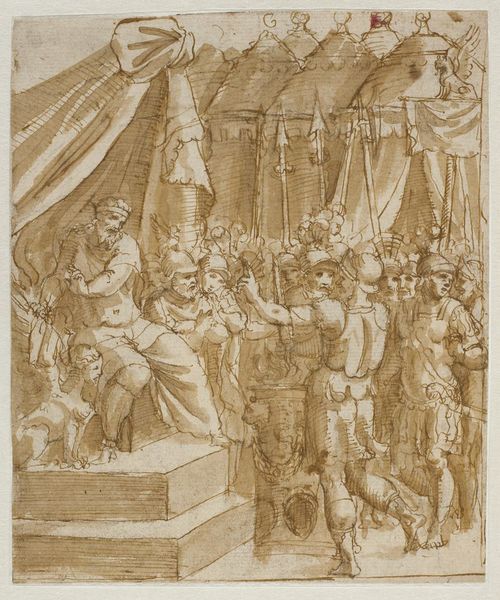
drawing, print
#
drawing
#
medieval
#
narrative-art
# print
#
figuration
#
soldier
#
pen-ink sketch
#
crucifixion
#
history-painting
#
northern-renaissance
Dimensions: Sheet: 13 3/4 × 9 11/16 in. (35 × 24.6 cm)
Copyright: Public Domain
Editor: Here we have "The Crucifixion" made around 1465-1495 by Master IAM of Zwolle, using pen and ink. The overwhelming detail packed into this relatively small drawing is striking. What aspects stand out to you in this piece? Curator: What I find most compelling is understanding this drawing not just as a religious scene, but as a product of very specific material conditions and labor. The paper itself, the ink, the tools used to create these fine lines— these were all valuable commodities in the 15th century. Think about the labor involved, not just in the artist's hand, but in the production of these materials. How does that influence our perception of the subject matter, considering it in the context of late medieval commerce and devotional practices? Editor: So, instead of focusing solely on the religious symbolism, you're drawing attention to the physical act of creating the image, and the economic implications of its creation? Curator: Precisely. The availability and cost of materials shaped what art was made and who had access to it. Also, consider the intended audience. Was this drawing meant for a wealthy patron, a monastic order, or broader circulation as a print? The intended audience impacts how we understand its meaning and purpose. What do you observe when you think about the consumers of this work? Editor: Well, seeing it as a print makes me consider multiple copies, possibly for different buyers. So it wasn't necessarily a unique, handcrafted devotional object for the elite. Curator: Exactly. Thinking about the material conditions and means of production helps us move beyond the traditional focus on the artist's genius, revealing the complex social and economic factors that shaped the artwork itself. Editor: I hadn't considered that this image was tied so intricately to trade and labor. It enriches the image to consider these constraints and opportunities that the artist would have faced. Curator: Absolutely. It gives us a richer, more nuanced understanding of "The Crucifixion."
Comments
No comments
Be the first to comment and join the conversation on the ultimate creative platform.
